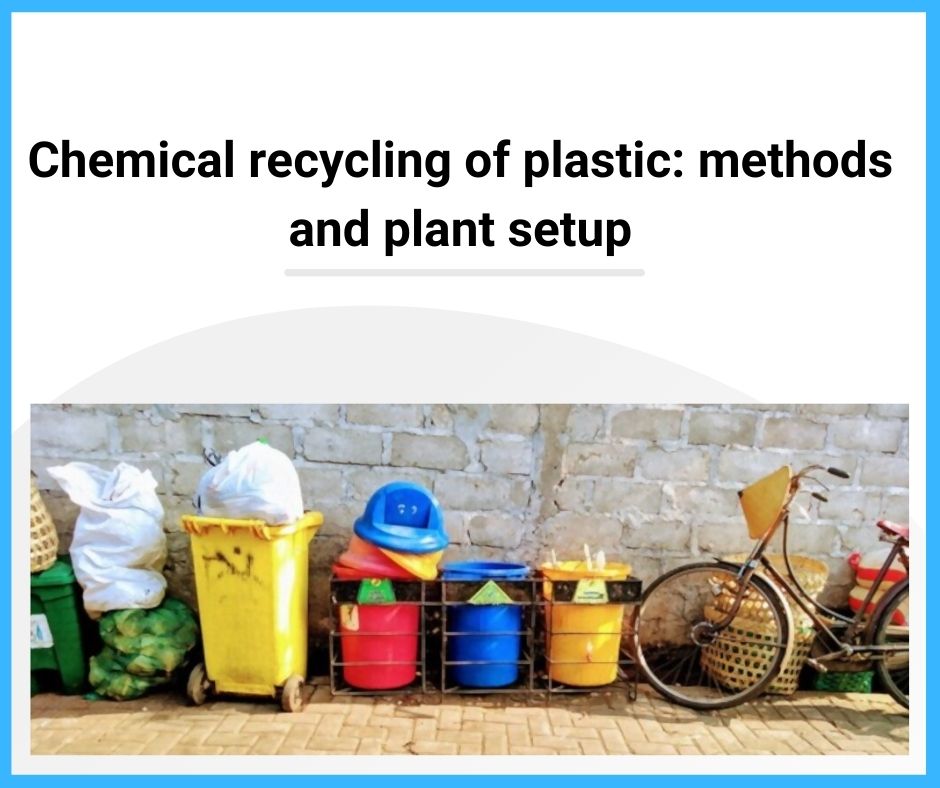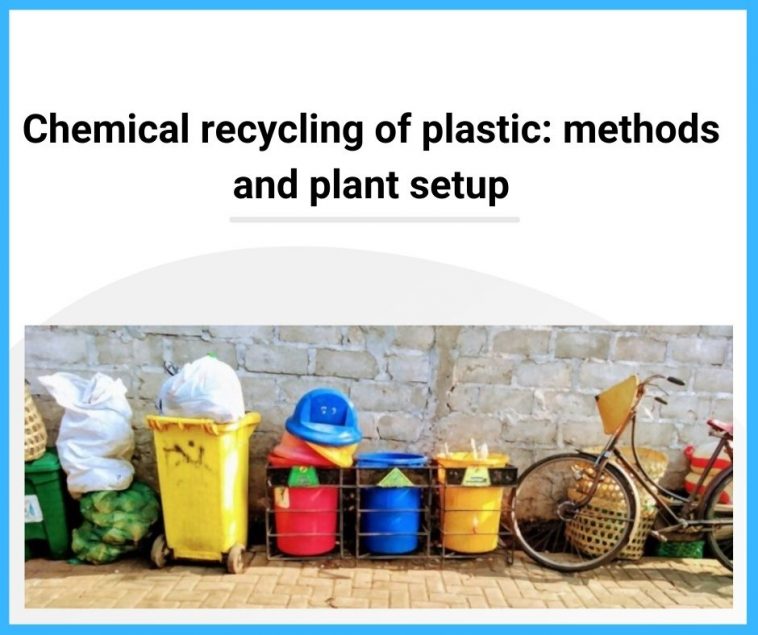
Introduction
Plastics can be used in a variety of applications in our everyday lives. It’s only natural to expect a significant amount of waste plastic in the municipal solid waste stream. In recent decades, several studies have focused on plastic waste recycling. Changes in regulatory and environmental concerns also push research in this regard.
There are four main types of plastic waste disposal and recycling systems which include as follows;
- Re-extrusion (primary)
- Mechanical (secondary)
- Chemical (tertiary)
- Energy recovery (quaternary).
Chemical Recycling of plastic waste
Chemical recycling refers to technologically advanced processes that break down plastic products into smaller molecules, typically liquids or gases that can be used as a feedstock for the manufacture of new petrochemicals and plastic. The word “chemical” is used because a change in the polymer’s chemical composition is almost certain to occur. Chemical recycling items have emerged as an important tool as fuel. DE polymerization processes, which can result in a very lucrative and efficient industrial scheme with a quality product yield and minimal waste, are behind its success. The following fall under the category of chemical recycling.
- Pyrolysis
- Gasification
- liquid–gas hydrogenation
- viscosity breaking
- steam or catalytic cracking
- Plastic waste to be used as a reducing agent
Chemical recycling has the advantage of being able to handle heterogeneous and polluted polymers with minimal pre-treatment.
Chemolysis: Chemical recycling is a widely used recycling process that adheres to the ideals of “sustainability.” The knowledge that chemically recycled plastics can be used in food applications has piqued people’s interest in the various chemolysis options. Chemical recycling methods are paving the way for innovative ways to use waste as a starting point for creating pure value-added goods for a variety of commercial and industrial applications. Chemically recycled polymers, on the other hand, are more costly than new materials due to raw material costs, capital spending, and size of operation.
Pyrolysis: Thermolysis is the non-catalytic treatment of PSW in the presence of heat at regulated temperatures. Pyrolysis is an innovative process capable of producing a safe, high calorific value gas from a wide range of waste and biomass sources. The waste’s hydrocarbon content is transformed into a gas that can be used in gas engines with an associated generation of electricity or in boiler applications without any need for gas treatment. This method is suitable for treating a wide range of solid hydrocarbon-based wastes while still generating a pure, high-calorific-value fuel gas. Pyrolysis has a host of other benefits, including
- operational advantages
- environmental advantages
- Financial benefits.
Gasification: Air is used as a gasification agent in this operation, which has a range of advantages. Since the 1970s, there have been reports of early gasification attempts of MSWs, specifically plastics. Because of the need for renewable fuels, Plastic waste has been co-gasified with other forms of waste, mostly biomass.
Hydrogenation: By definition, hydrogenation is the addition of hydrogen to a system through a chemical reaction. The Veba process is the main technology used in PSW recycling through hydrogenation technology.
- Hydro-cracking: Hydrocracking has many benefits, including the ability to manufacture high-quality naphtha feed and the ability to use a variety of plastics. This is due to the high price of hydrogen, as well as the high operating demands and associated operational costs.
- Hydro pyrolysis and hydroconversion: It’s a catalytic-induced thermochemical conversion method that can transform organic material into various hydrocarbon fuels.
KDV process: It appears to be able to catalytically convert biomass and plastic waste into liquid fuels at pressures close to the atmosphere. The results of this process have the advantage of almost completely removing oxygen atoms, making the final liquid fuel suitable for use in traditional combustion engines.
Plastics waste plant setup
- Chemical recycling of plastic waste plant setup can be brought into existence by keeping few requisites in mind which are as follows:
- Site development
- Infrastructure
- Types of machinery
- Vehicle or automobile
- Office equipment
- Technical knowhow
- Pre-operative expenses
- Working capital
- Plastic recycling machine: The machinery to be employed for chemical recycling of plastic must entail the following:
- Those in the informal sector must be able to afford it.
- Less complicated and therefore easier to operate, particularly when considering the technical abilities of those working in the informal sector.
- Must be easy and cheap to maintain
- Must be low cost
- The following machine would be required:
- Grinder
- Washing & Drying Unit
- Agglometer
- Extrusion with Cooling Tank
- Dana Cutter
Conclusion
The present state of the chemical recycling of waste plastic indicates that it has the potential to become one of the most important processes for reducing waste in landfills. The chemical processing of waste plastics into real worth chemicals can be a useful way to complement existing recycling methods.




